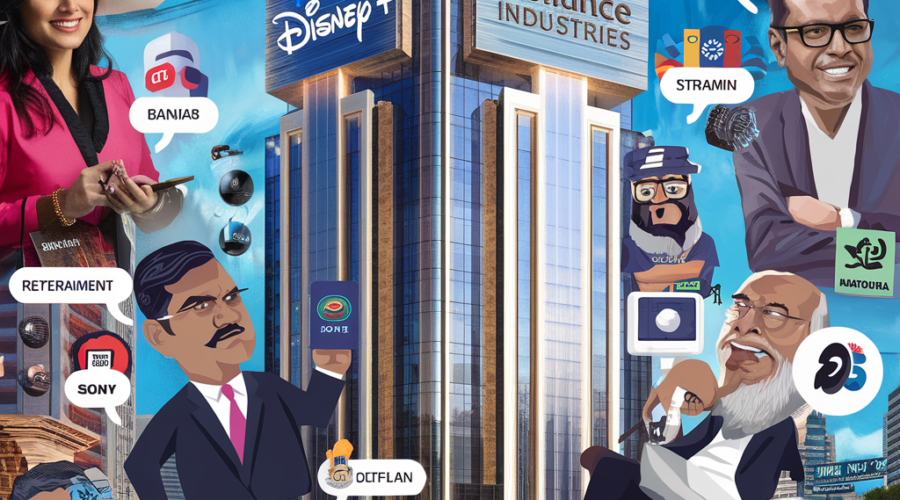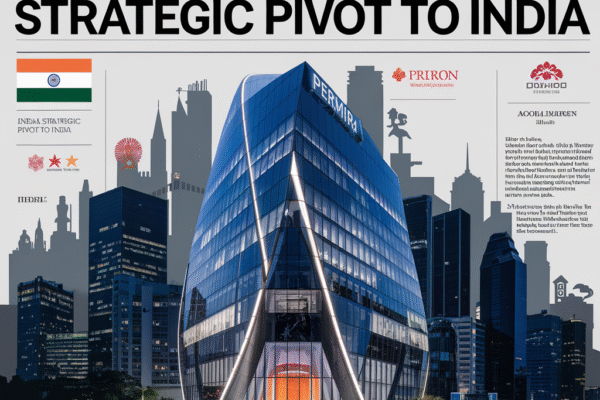Disney’s $8.5B India Media Merger Gets Regulatory Nod: A Strategic Move in the Evolving Media Landscape
Key Highlights:
- Walt Disney Co. and Reliance Industries have secured regulatory approval from India’s Competition Commission (CCI) for their $8.5 billion merger of Indian media assets.
- The merger aims to create a formidable player in India’s media market, combining 120 TV channels with two streaming services.
- To address concerns over monopolistic control, Disney and Reliance agreed to refrain from raising advertising rates excessively for streamed cricket matches and bundling advertising slots for different cricket tournaments.
Strategic Rationale and Objectives
The merger is a strategic move designed to enhance Disney’s presence in the Asia-Pacific region, with a focus on growth in digital streaming and content diversification. By combining their strengths, the merged entity will pose a significant competitive challenge to existing powerhouses such as Sony, Zee Entertainment, Netflix, and Amazon in India’s highly competitive media market.
Reliance, led by Chairman Mukesh Ambani, will prioritize aggressive content acquisition and the development of exclusive programming to attract and retain subscribers across various demographic segments. This strategic vision aligns with Disney’s broader goals in the Asia-Pacific region.
Regulatory Approval and Competitive Landscape
The CCI granted approval after receiving commitments from Walt Disney and Reliance to ensure fair competition in the media space. These concessions aimed to address concerns over monopolistic control and maintain a balance within the advertising market.
The merger between Walt Disney and Reliance will inevitably raise the stakes for competitors like Sony, Netflix, and Amazon. These companies have significant investments in the Indian media landscape and may need to rethink their strategies to compete with the newly formed media powerhouse. The combined strength of Walt Disney and Reliance in terms of resources, content offerings, and distribution capabilities may lead to intensified competition marked by innovative programming and pricing strategies, potentially benefiting consumers.
Content Offerings and Financial Implications
The merger is expected to facilitate not just a focus on cricket but also offer an avenue to diversify content offerings, ranging from cinema to original series. This will appeal to a broader audience in one of the world’s fastest-growing media markets.
Both companies have collectively spent approximately $9.5 billion on acquiring rights for lucrative sporting events, indicating substantial investment in the Indian media market. While financial details of the merger are not explicitly mentioned, such mergers often aim to achieve synergies and cost savings, potentially leading to improved financial performance over time.
Disney’s $8.5B India Media Merger – Conclusion and Future Outlook
The regulatory approval for Disney’s $8.5 billion merger with Reliance Industries marks a significant strategic move in the evolving media landscape. The merged entity is poised to dominate India’s entertainment industry, offering a diverse range of content and potentially reshaping viewer engagement patterns.
As the media landscape continues to evolve, driven by global trends in content consumption and digital streaming, this merger will likely influence future mergers and acquisitions in the industry, emphasizing the importance of digital streaming and content diversification.
Looking ahead, the leadership team, with Nita Ambani as Chairperson and Uday Shankar as Vice Chairperson, will play a crucial role in addressing the challenges of integration and maintaining brand identity while realizing the synergies of the merger. Their strategic vision and operational acumen will be critical in shaping Disney’s positioning in





